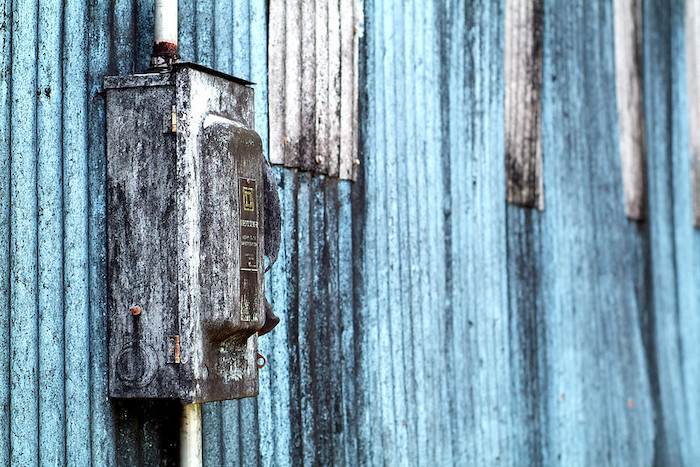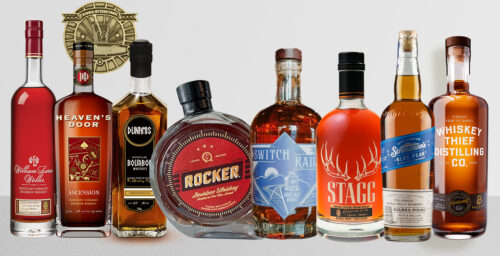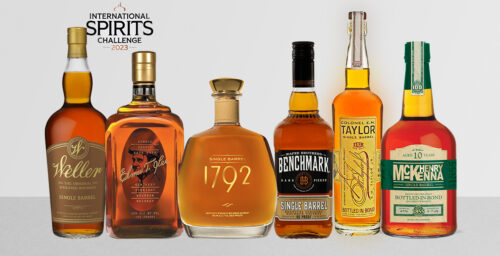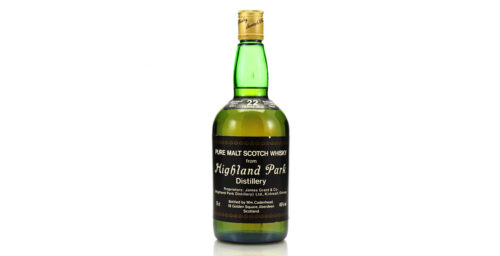Editor’s Note: This is Part 7 of a 9-part series about Baudoinia compniacensis, the whiskey fungus. Part 1 is here, Part 2 is here, Part 3 is here. Part 4 is here. Part 5 is here. Part 6 is here. It comes to us via a reprint from the original article at Chuck’s site.
In 2016, the federal Baudoinia compniacensis lawsuit against Diageo, filed by Louisville personal injury lawyer William F. McMurry on behalf of business owner Bruce Merrick and several Louisville citizens, was dismissed at the request of all parties. Both sides stated that no settlement had been reached and everyone would pay their own legal fees and other costs.
The Merrick lawsuit had claimed Diageo was responsible for the black fungus that blanketed homes and businesses near Stitzel-Weller.
Diageo argued it should not be held responsible because it was free to release ethanol under the federal government’s Clean Air Act. McMurry argued the plaintiffs could sue under the state’s nuisance law, which could be used to protect citizens against air pollution.

As part of the dismissal, all parties agreed not to discuss the suit, nor explain why it was dropped. The most likely explanation is that it became clear to plaintiffs that the big payday they hoped for was not coming.
About one year later, the Kentucky Supreme Court ruled that George Miller, a Louisville property owner who sued Brown-Forman and Heaven Hill for property damage caused by Baudoinia, could pursue his state tort claims for damages, but it rejected his demand for injunctive relief that would require distillers to adopt a particular type of unproven pollution-control technology not required under Brown-Forman’s and Heaven Hill’s permits from the LAPCD. The Court remanded the case to the Circuit Court for further proceedings consistent with its opinion.
Although the Supreme Court said the damages claim could continue, it didn’t. To collect, Miller had to prove actual damages, prove Baudoinia caused them, and prove the company’s ethanol emissions caused the fungus. It is likely the value of provable damages was not great enough to justify the expense of continuing the suit.
In the current Jack Daniel’s case, the novelty is that the plaintiff is not suing Jack Daniel’s parent company Brown-Forman. She is suing Tennessee’s Lincoln County for wrongly issuing the building permits.
Just because lawsuits don’t seem to stick, that doesn’t mean the fungus issue is going away. It continues to be a public relations problem for distillers.
It is hard to wrap your head around the amount of space a large producer needs for whiskey maturation. A standard whiskey barrel holds 53 gallons, is about three feet long, a little more than two feet in diameter, and weighs about 500 pounds when full. Now imagine 50 of them, 1,000, 20,000, a million.
In 2021, Kentucky’s distillers filled 2.6 million barrels. As of January, 2022, there were about 11.4 million barrels in Kentucky maturation warehouses. Tennessee has about 3.5 million. That’s about 750 million gallons, the same amount of industrial alcohol the American distilled spirits industry produced for all of WWII.
Maturation warehouses in Canada are a little different. Instead of racks, barrels are stored on pallets, standing up, moved around by forklifts, and rarely age more than three years. In all cases, though, maturation warehouses are big, there are a lot of them, and they contain enormous amounts of alcohol, hundreds of millions of gallons.
Worldwide demand for American whiskey keeps increasing with no end in sight. The fastest growing segment is premium whiskey, which can take twice as long to mature as the standard product, so typically eight years instead of four.
Most large producers have multiple warehouses on their distillery campus. In some cases, 40 or more. Each warehouse holds between 20,000 and 50,000 barrels. At least one 100,000-barrel warehouse has been built. In addition to warehouses at the distillery, most producers have several off-campus stand-alone maturation facilities too.
The Lebanon Enterprise is the local newspaper for Lebanon, Kentucky, county seat of Marion County. Also in Marion, near the smaller town of Loretto, is the Maker’s Mark Distillery, which is owned by Beam Suntory. Maker’s has maturation warehouses at the distillery and in Loretto itself, at the site of the former Loretto Distillery. Maker’s always has had warehouses there, but has added more.
In 2018, the Enterprise reported that Maker’s Mark CEO Rob Samuels spoke to a joint meeting of the Marion County Fiscal Court and the Lebanon City Council about the distillery’s plan to build ten new warehouses in or near Lebanon, at a site to be determined.
Maker’s Mark asked for industrial revenue bonds for the project, which the county gave it in 2012 for its new warehouses in Loretto. If the county approved, the company would receive a benefit worth millions of dollars. Marion County residents took the meeting as an opportunity to express their concerns about the further spread of Baudoinia in the county. Several Loretto residents came to warn their Lebanon neighbors based on their experiences.
In an editorial after that meeting, Enterprise publisher Stevie Lowery wrote, “Right now, many residents feel that Loretto has been ignored by the distillery. Loretto is ‘just a road to get there,’ so to speak. And, now, that road and everything near it is turning black from the warehouse fungus.”
A pattern, it seems, has been established. A producer plans a new distillery or maturation facility. It seeks permission and, usually, financial incentives from the appropriate government bodies, which hold public hearings. The company and the government want to talk about economic development, but the public only wants to talk about fungus.
NEXT TIME: Baudoinia-panic kills a major Tennessee facility.








